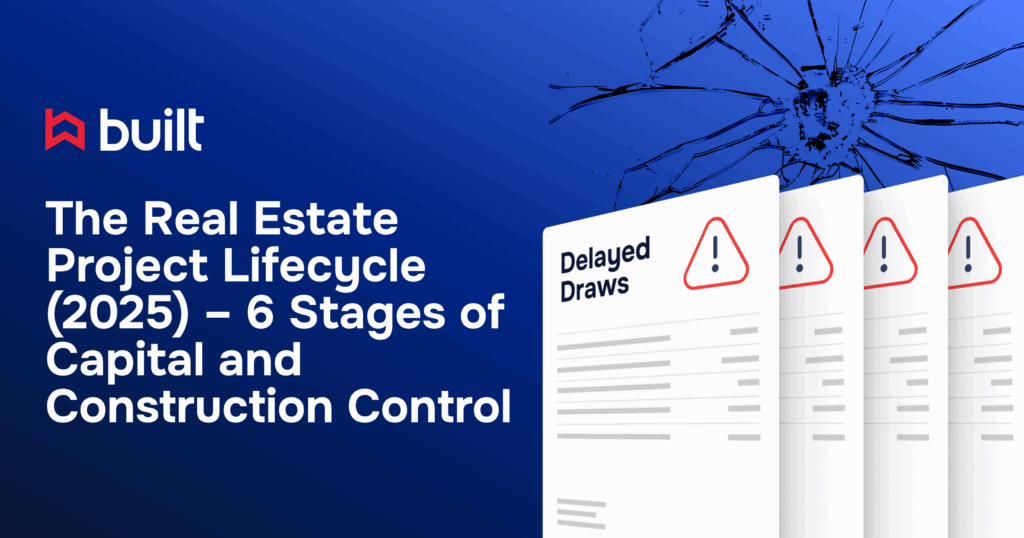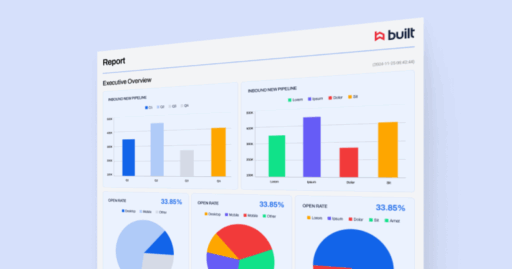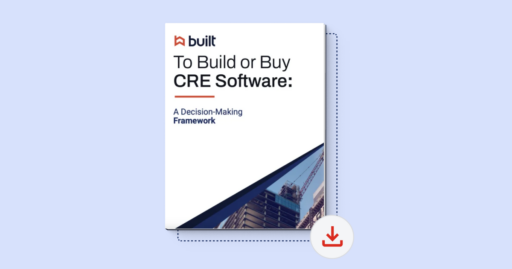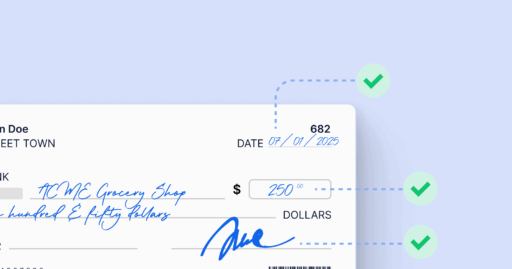5 Ways a Real Estate Lifecycle Platform Can Boost Your ROI as an Owner-Developer

Stop losing capital to disconnected systems. This article shows owner-developers five ways a real estate lifecycle platform can boost ROI by unifying data and streamlining every project phase.
What if the biggest risk to your project’s ROI isn’t market pressure, but your own disconnected systems?
In 2025, capital isn’t lost in the field; it slips between siloed teams and static workflows. This visibility gap drags performance and can make it too late to course-correct when issues surface. We’ve seen what happens when that infrastructure doesn’t exist: the StoryBuilt collapse didn’t just reflect market pressure, it exposed the dangers of broken oversight and reactive operations.
The key to mitigating this risk is treating capital as a connected system across the entire lifecycle. This article will break down five powerful ways a real estate lifecycle platform can give you the control and clarity you need to maximize returns.
Here’s How a Connected System Boosts Your ROI
Even the cleanest pro forma breaks down when execution is treated as a linear process. Timelines slip, capital pacing misaligns, and handoffs create drag.
To truly boost ROI, the firms outperforming in 2025 are executing differently. They treat execution as a connected system, not a sequence, where each phase reinforces the next, translating strategy into performance without resetting.
These phases span distinct stages—from pre-development to construction and operation—but they’re tightly interconnected.
Here are five ways a real estate lifecycle platform can help owner-developers turn lifecycle pressure into portfolio-level precision and boost their ROI.
1. Boost ROI by optimizing the underwriting and acquisition phase
The foundation is laid at acquisition. Early choices shape capital flexibility, market fit, and long-term performance.
- Market strategy: Top developers dissect demand. Location is central to project planning and risk assessment, shaping everything from market fit to absorption modeling. Hyperlocal comps, zoning insight, and feasibility data drive disciplined decisions.
- Capital design: Stack structure = speed. Mezz, bridge-to-perm, and reserve allocations must align with project velocity and cash flow timing.
- Community positioning: ESG, local partnerships, and narrative fit are IRR enablers when embedded from day one.
2. Boost ROI by mitigating risk and streamlining construction
Shovels in the ground don’t mean risk is under control. In fact, the construction phase is often where capital risk becomes most acute. Most overruns begin upstream, with misaligned funding, disconnected systems, and outdated visibility.
- Forecast fragility: Without connected cost tracking, even small deviations compound, putting IRR at risk long before anyone sees it coming. Tracking real-time changes during construction is essential to maintain forecast accuracy.
- Capital timing mismatches: When equity releases, lender draws and site progress fall out of sync, liquidity tightens, and timelines slip.
- Visibility gaps across teams: Construction, finance, and asset management too often operate from separate playbooks, slowing decisions and blurring accountability. Building real-time reporting structures or centralized data environments during this phase is important for effective management and risk mitigation.
- Seamless permit approval and workflow management: A significant source of delays and costs is the manual, disconnected permit approval process. A robust platform should offer unified dashboards for real-time tracking of permit statuses and automate documentation workflows, ensuring you can proactively mitigate a major execution risk long before it can derail your project’s schedule and budget.
The construction phase concludes when all planned improvements are complete, marking the transition to stabilization and property operations, which is a critical moment for performance continuity.
3. Boost ROI by accelerating stabilization and capital recycling
Stabilization is where performance is tested and proven. It marks the start of the operations phase, where clean handoffs, accurate reporting, and system connectivity become critical. This is also the point where fragmented workflows can break investor trust and delay reforecasting.
- Asset readiness: Clean, digital handoffs reduce onboarding friction for operations teams and accelerate tenant satisfaction. Effective property management ensures maintenance, communication, and continuity from day one.
- Performance-to-plan: Reporting must reconcile underwriting assumptions with real absorption, leasing velocity, expenses, and NOI. This alignment is key to tracking whether the asset is delivering as modeled.
- Capital recycling: The faster you can reforecast with confidence, the sooner you can return capital, redeploy it efficiently, and strengthen investor relationships.
4. Boost ROI with unifying end-to-end visibility
Scaling full-cycle execution is about removing drag. High-performing owner-developers are building for repeatability, control, and cross-team alignment by:
- Minimizing manual processes and reducing reliance on external parties to streamline workflows.
- Ensuring budgeting, draw pacing, compliance, and asset health all live in a single, connected ecosystem.
- Providing operational governance through embedded controls, audit trails, and role-based permissions that match an organization’s structure.
The right real estate lifecycle platform scales with a growing portfolio without ballooning overhead or introducing process risk. This allows you to manage capital, timelines, and teams in one connected workflow, ensuring your business can expand without losing clarity or speed.
5. Boost ROI by streamlining workflows (e.g., permit and draw management)
A critical way to boost ROI is by actively mitigating risk across every project phase. While traditional methods rely on reactive reporting, a connected platform provides the infrastructure for proactive, real-time decision-making.
This enables teams to:
- Identify and flag risk before it snowballs, such as vendor delays or unexpected variance.
- Keep capital strategy aligned with project reality, ensuring pre-close assumptions flow directly into tracking systems.
- Maintain continuity across phases, preserving data integrity and execution logic during handoffs.
- Generate stakeholder reports without a fire drill, as all information is pulled from a single source of truth.
By embedding clarity, speed, and accountability into every phase of your project lifecycle, you turn visibility into coordination, and coordination into control. This proactive approach helps you preserve capital, prevent costly mistakes, and ultimately maximize your return on investment.
Built for Real Estate Execution in Motion
Execution infrastructure is about enabling timely, coordinated action across every team and project phase. That’s where Built delivers as the operating backbone for developers. It’s purpose-built for scale, having already tracked over $250 billion in capital across more than 86,000 active projects.
Rather than providing retroactive reporting, Built enables you to put the principles of this article into practice—from underwriting to stabilization—by enabling timely, coordinated action across every team and project phase.
Just ask Copper Builders, who scaled from local to regional operations with every project anchored in a single execution system. Or John Kraemer & Sons, who replaced manual tracking with streamlined draws, digital lien waivers, and faster payments, creating efficiency for internal teams and trust with subcontractors.
Built is infrastructure for developers who see execution as a lever for performance.
The Future of Execution Belongs to the Connected
As we’ve seen throughout this article, execution doesn’t fall apart in the field. It breaks when teams lose sight of the full financial picture.
For owner-developers, the difference between targets hit and IRR missed often comes down to one thing: clarity. When data is delayed, handoffs get messy. When systems don’t connect, strategy drifts.
But when execution runs on shared, real-time truth, capital moves faster, handoffs stay clean, and teams make better calls at every phase.
The developers outperforming in 2025 are managing the full lifecycle with systems built for connection, control, and scale.
Built is the infrastructure that makes that possible.
Ready to see how it works? Request a demo, and let’s talk about execution that actually delivers.
Construction Project Tracking Software FAQs for Owner-Developers
What distinguishes a lifecycle platform from traditional construction tracking tools?
Most tracking tools focus on single-phase performance, typically construction progress or vendor compliance. A lifecycle platform spans the entire real estate development process, linking acquisition data, budget management, construction activity, and stabilization metrics in one connected system.
This continuity supports smarter business decisions and capital alignment across the full asset lifecycle.
How can platforms help mitigate delays caused by permit approvals and financing friction?
A robust system should track land use approval milestones, automate documentation workflows, and surface dependencies tied to building permits or construction financing. This proactive visibility allows teams to resolve blockers before they derail timelines, minimizing costly delays and keeping stakeholders aligned.
Where do most developers lose portfolio efficiency, and how can systems address it?
Efficiency breaks down at handoffs: pre-development to construction, construction to operation, or project to portfolio. Inconsistent data, missing context, and manual re-entry force teams to reset instead of continue.
Lifecycle platforms solve this by preserving execution logic across stages, reducing duplicate work, and enabling real-time visibility into ongoing projects.
How does real-time visibility into the development process improve portfolio-level decision-making?
Real-time visibility connects each stage (pre-development, construction, and operation) into a unified view of budget health, schedule variance, and asset performance. This lets leadership teams identify underperforming projects, optimize resource allocation, and adjust capital strategies without waiting for manual reports.
With cost data, leasing progress, and change orders surfaced as they happen, developers can move with confidence and keep business goals aligned across the portfolio.
Related Posts
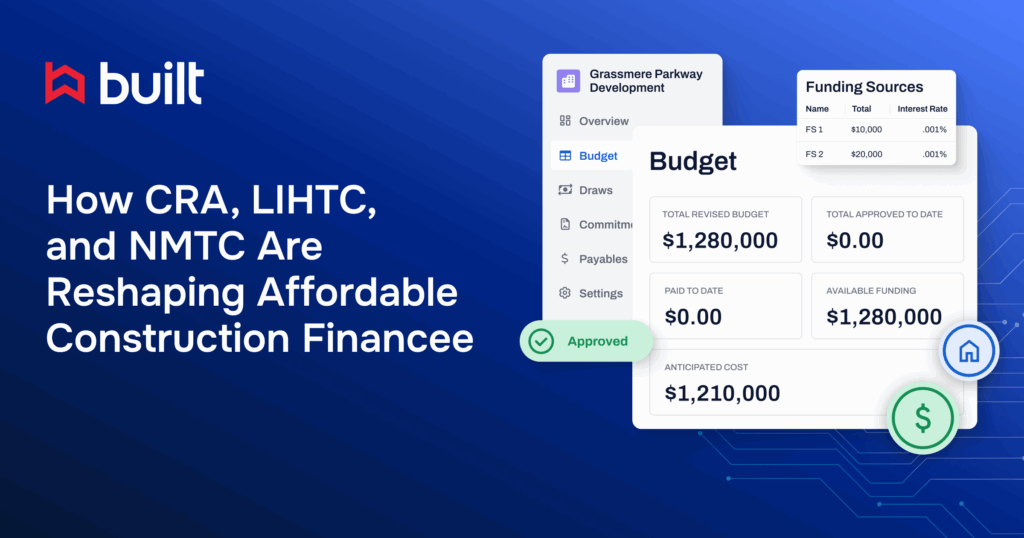
How CRA, LIHTC, and NMTC Are Reshaping Affordable Construction Finance
